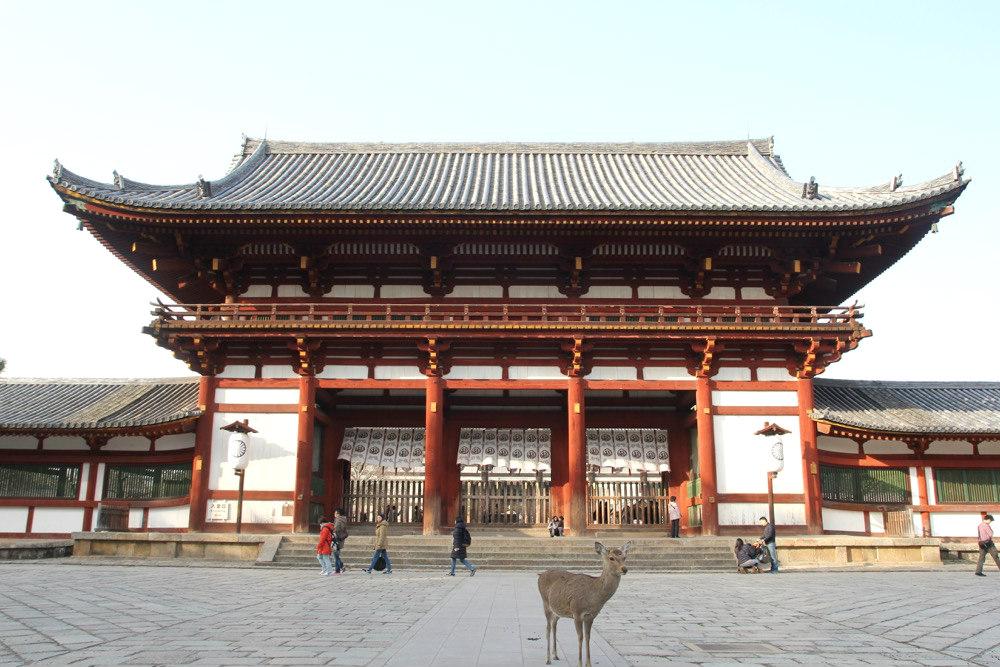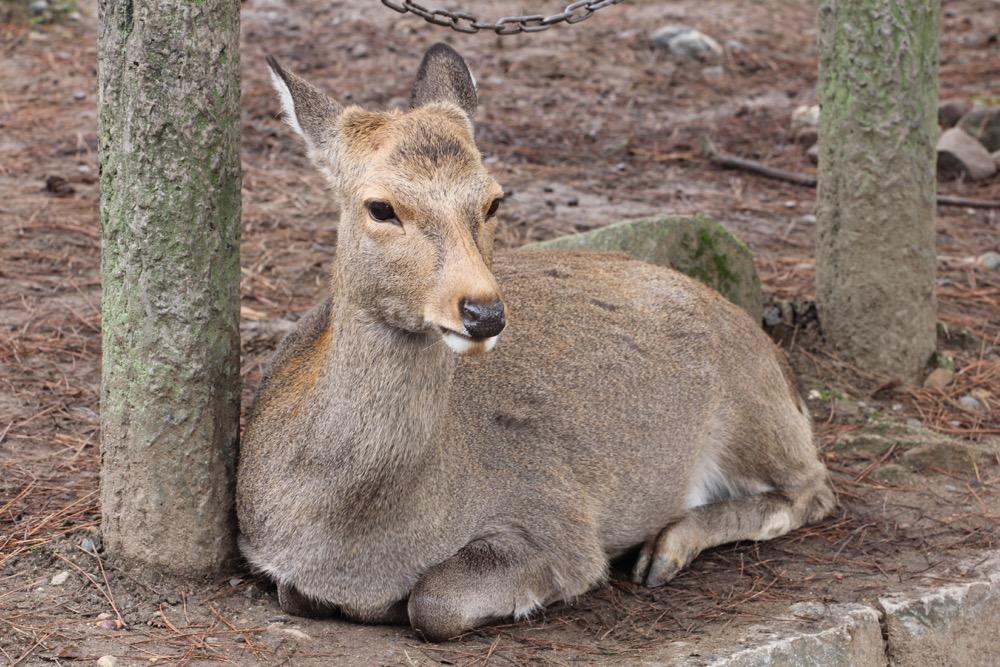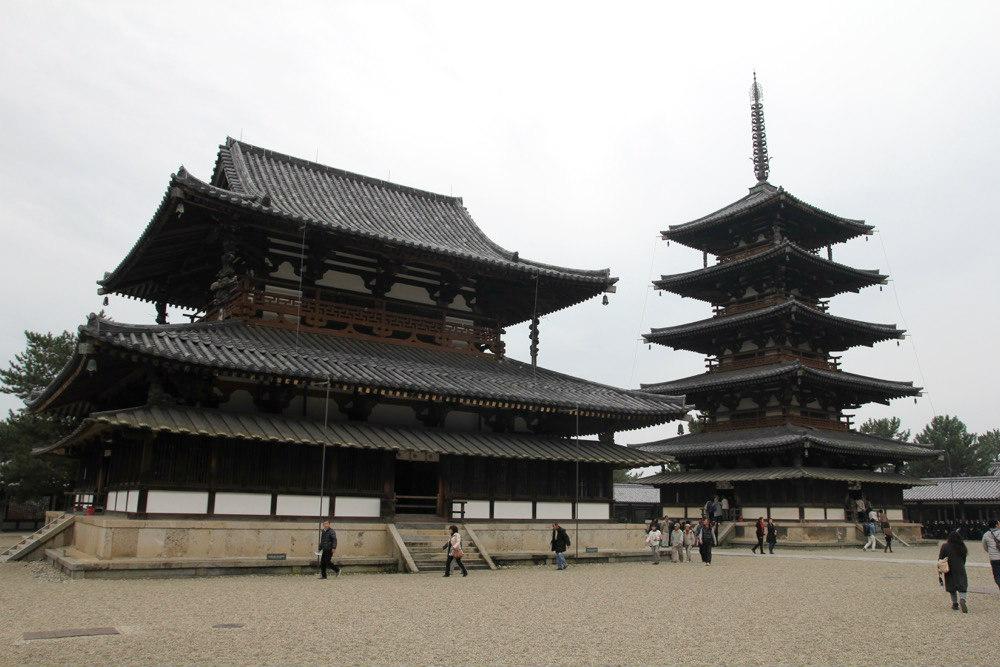Deer City: Why Nara should be part of your Japan itinerary

Very little has been written about Nara, the capital city of Nara Prefecture, right in the middle of the Kansai region of Japan. Nara doesn’t have Osaka's shopping, dining and entertainment options or Kyoto's 1,001 temples, shrines, and geisha houses.
But nature, photography and selfie lovers will instantly fall in love with everything Nara has to offer. Nara is accessible from both Osaka and Kyoto by train: only 35 kilometers from Namba Station (Osaka) and 40 kilometers from Kyoto Station.
In the 8th century, Nara was the imperial capital of Japan. In modern times, Nara offers interested visitors two main things: Japanese deer—considered the messengers of the gods—and Todai-ji, a Buddhist temple complex that houses the world’s largest bronze statue of the Buddha Vairocana (Daibutsu).
Fawn over deer in Nara

The starting point of any planned day trip or overnight stay in Nara is JR Nara station. From here, tourists can take the local bus to go from JR Nara station (N-1) to Todaiji-Daibutsuden (N-7) for ¥210 (about P86 as of writing) or buy day passes for unlimited bus rides: 1-day pass for ¥500 (P204); 1-day wide pass for ¥1000 including Horyu-ji); and 2-day pass for ¥1500.
Even before arriving at the Todaiji-Daibutsuden bus stop, one can already see a number of white-spotted deer roaming around the area freely. It was believed that the mythological god Takemikazuchi was riding a white deer when he arrived in Nara to guard the newly built capital of Heijo-kyo. So revered and beloved are the deer in Nara that their images have been adopted as the city’s mascot and can be seen literally anywhere.
Even though the deer are used to humans and the accompanying crowds, they won’t initially come close to you. But food—especially the wafer crackers being sold at the park grounds for ¥150—will instantly get you an up-close encounter with these cute mammals. Petting these animals is actually the norm rather than the exception; no human being is in charge of supervising the deer, except for a park staff or two collecting their pebble-like droppings.
The entrance to Todai-ji, Nandaimon (Great South) Gate is only a three-minute walk from the Nara deer park, but with all the feeding of and taking selfies with the animals, one can easily spend the whole afternoon within this tract of land that the deer and their fawns call home.
Magnificent Todai-ji

One passes by Nandaimon and a paved path to reach the entrance to Todai-ji/Daibutsuden (Big Buddha) Hall. After paying the ¥500 entrance fee, prepare your eyes to see the world’s largest wooden building; even after visiting numerous attractions and landmarks in Japan, Todai-ji ranks as one of the most marvelous and breathtaking sights I have ever seen.
The sheer size (57 meters wide, 50 meters long, and nearly 50 meters high) of the temple alone generates oohs and aahs from first-time visitors. It’s even more daunting to think that the current structure is only two-thirds the size of the original temple. Todai-ji's colossal size serves a purpose: housing a 15-meter-tall statue of Buddha, the world’s largest statue covered in bronze.
The Big Buddha Hall also houses other relics and artifacts like the Lord of Limitless Vision, Komokuten; the Guardian of the North, Tamonten; and smaller Buddha statues. Tourists can also see scaled replicas of the versions of Todai-ji: from the original one built in 752 and the most current restored structure dating back to 1692.
Horyu-ji: Go for the temple, stay for the museum

Other notable attractions within Nara are Kofuku-ji and its famous three and five-layer pagodas, and the Kasuga Taisha Shrine, known for its bronze and stone lanterns.
Another must-visit area is Horyu-ji, a quick 30-35 minute train ride from JR Nara station. The ticket to enter the Horyu-ji temple complex is actually a 3-in-1 combination ticket (¥1500); allowing visitors to enter the Western Precinct, Gallery of Temple Treasures, and the Eastern Precinct.
The Western Precinct is where one can find the world’s oldest surviving wooden structures: the main hall (Kondo), the central gate (Chumon) and a five-layer pagoda. Constructed during the Asuka Period (538-710), the three structures have not experienced major damage and have only needed repairs and renovations over the centuries.
A five-minute walk from the Western Precinct is the Eastern Precinct, where the Yumedono or Hall of Visions can be found. The structure is dedicated to Prince Shotoku, responsible for the spread of Buddhism in Japan, and allows visitors to view life-sized statues of the prince together with Buddha and other monks.
Tourists are instructed not to take pictures of the things they see inside the Hall of Visions but when I visited, there was actually a camera crew filming for probably a documentary or a TV show, so go figure.
Not to be confused with the Gallery of Horyu-ji Treasures in Tokyo, the Gallery of Temple Treasures in Horyu-ji houses structures, statues and artifacts considered National Treasures or important cultural properties of Japan. Most pieces are related to the early days of Japanese Buddhism, between the 6th and 7th centuries, and shows the strong ties and influences of countries like China, Korea and India had in ancient Japan.
A bit of nature, sightseeing and a dose of history. When visiting the Kansai region, give Nara a chance, even for only an afternoon. Be amazed by the massiveness of Todai-ji, marvel at the priceless artifacts at the Gallery of Temple Treasures in Horyu-ji, and, of course, overload on kawaii with the deer. — BM, GMA News




